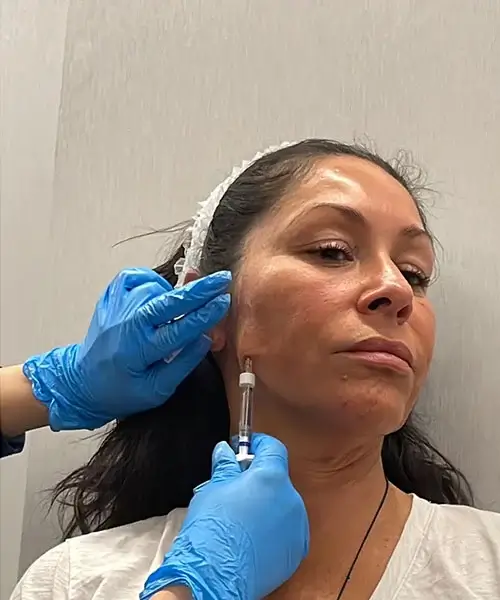Smile Makeover 101: Solutions for Fixing a Crooked Smile
By Dr. Stephen Cosentino
PRESIDENT OF EMPIRE MEDICAL TRAINING
Although uncommon, crooked smile is among the most concerning adverse events associated with Botox® injection. It’s unsightly, can interfere with speech and eating, and can last for months if not reversed.
Crooked smile can occur naturally, as the result of physical trauma or surgical/dental error, and for other reasons (including lifestyle factors) too. However it occurs, it’s unfortunate, and it generally warrants intervention.
Which might leave you wondering: What’s the best way to safely and permanently fix crooked smile?
There are several ways, actually. But before getting into them, let’s look at the potential causes of crooked smile. The origin of your lopsided smile could affect how, when, and even whether you seek treatment.
Causes of Crooked Smile
The most common causes of crooked smile are:
Dental Issues
These can include missing adult teeth, naturally crooked teeth, weak or broken teeth, or trauma-affected teeth. Abnormalities of the jaw and mandibular bones are often lumped into this category, but they’re discussed separately below as well.
Botox (Botulinum Toxin) Complications
Improperly injected Botox (or any other botulinum toxin medication) can temporarily cause crooked or lopsided smile. The effects usually last only as long as the medication does (3 to 6 months) but are unsightly and can interfere with daily activity in the meantime.
Abnormal Facial Structure
This is a broad category that encompasses a variety of genetic (congenital) issues with the bones of the lower face. Examples include:
- Misaligned jaw (underbite or overbite)
- Malformed facial bones
- Missing or misshapen facial tissue
- Cleft lip
Physical Trauma
Physical trauma can cause long-term dental issues, facial structure changes, and facial muscle atrophy. Causes include car or cycling accidents, falls, and interpersonal violence.
Stroke, Bell’s Palsy & Other Origins of Facial Paralysis
Facial weakness and/or paralysis of the facial muscles are common causes of lopsided smile. Frequent causes include:
- Stroke
- Seizure
- Bell’s palsy (caused by a viral infection that typically affects the left side of the face)
- Multiple sclerosis
- Guillain-Barre syndrome (a rare autoimmune condition)
- TMJ issues
Lifestyle Factors
Lifestyle factors are most closely associated with dental issues (and general oral health issues) that lead to crooked smile. They include but aren’t limited to:
- Poor diet (excessive sugar and starch), especially when correlated with diabetes
- Smoking
- Chewing tobacco
- Excessive alcohol and drug use
Solutions for Fixing Crooked Smile
The best solution for a particular case of crooked smile depends on its origins and other patient-specific factors. The most common include:
Mouth Exercises
For conditions not related to structural abnormalities, dental issues, or permanent nerve damage, physical therapy may be the best option.
Dental Work
This is the best option for crooked smile related to most dental abnormalities or illnesses. Specific solutions may include caps or crowns, dental implants, and tissue grafting.
Orthodontia
This is the best option for lopsided smile related to crooked teeth. It may be less invasive than dental implants or oral surgery, and certainly less invasive than traditional facial surgery.
Facial Botox
Facial Botox is only recommended for correcting crooked smile caused by improper Botox injection. Fixing an uneven smile with Botox requires a fine touch, so always work with a board-certified provider with advanced Botox training and never self-inject.
Facial Surgery
Though more risky and costly than other choices, this is the best option for conditions related to serious facial trauma or structural abnormalities. Choose a licensed plastic surgeon who specializes in your specific issue.


